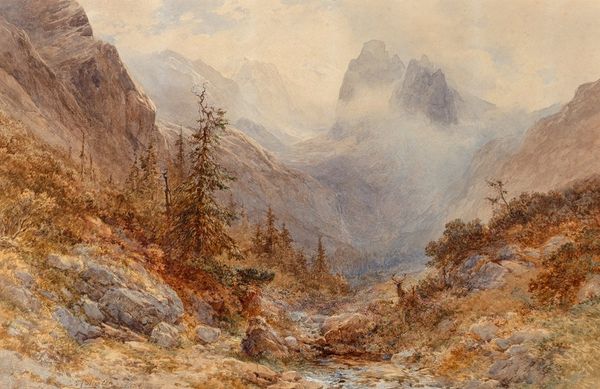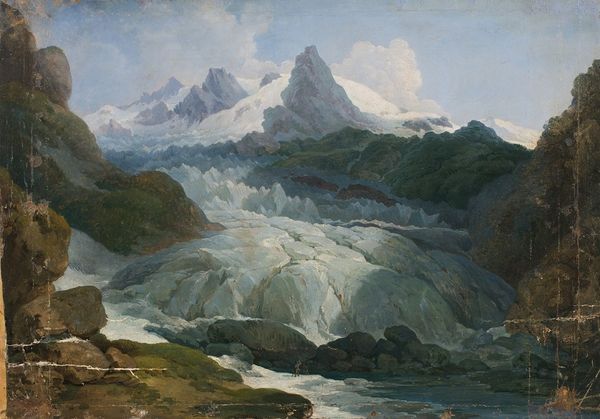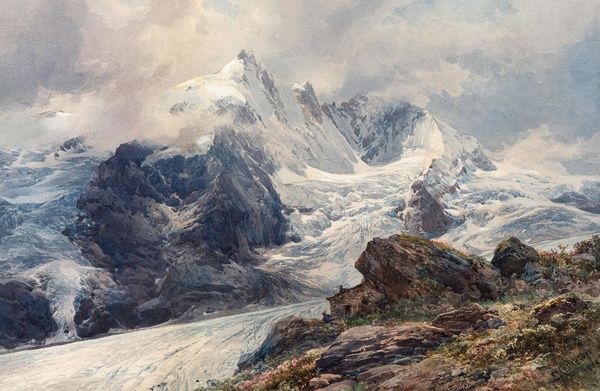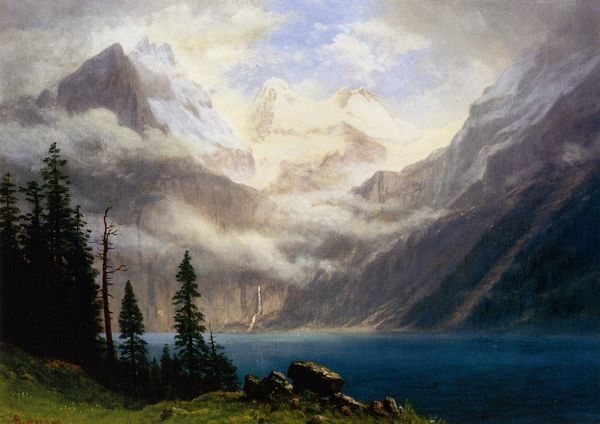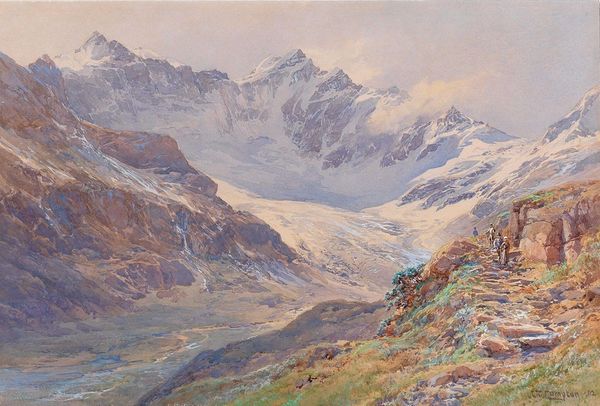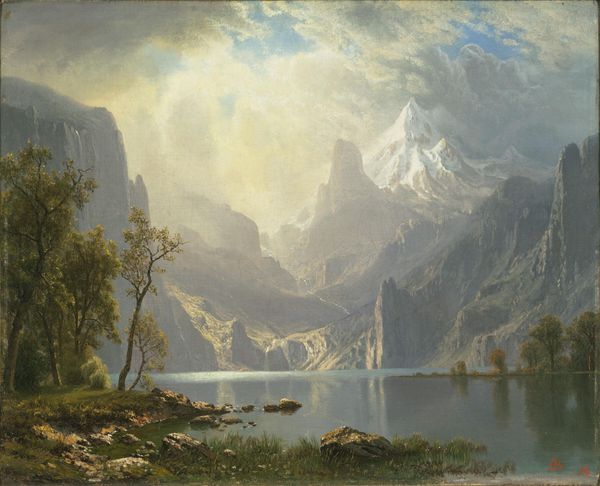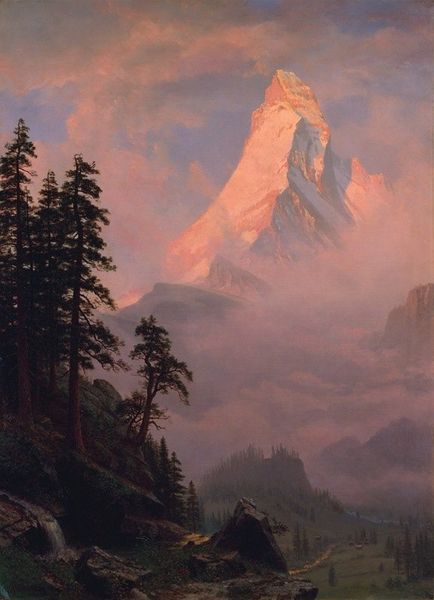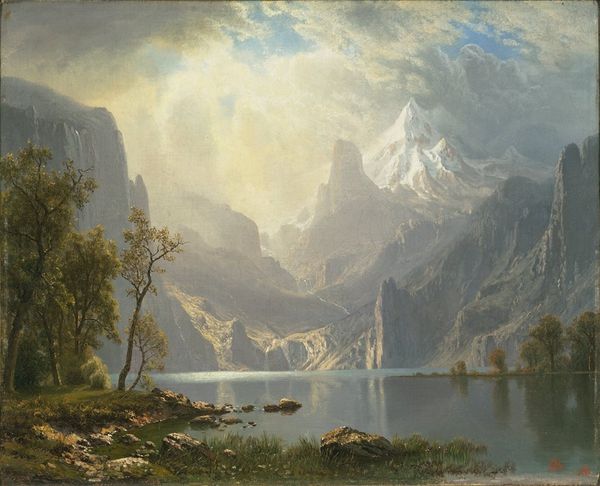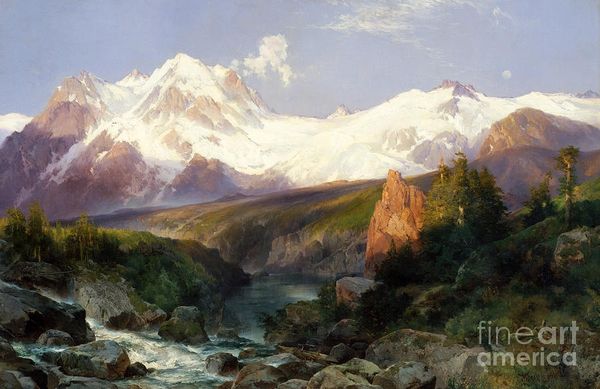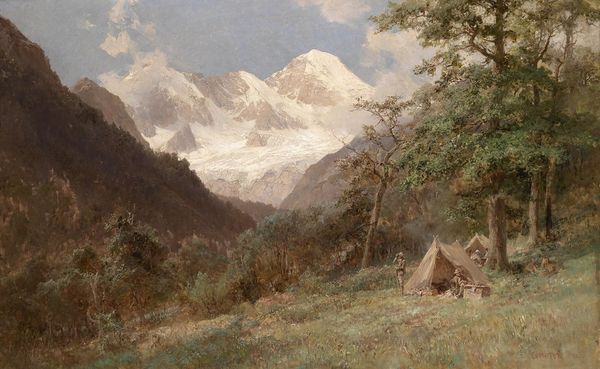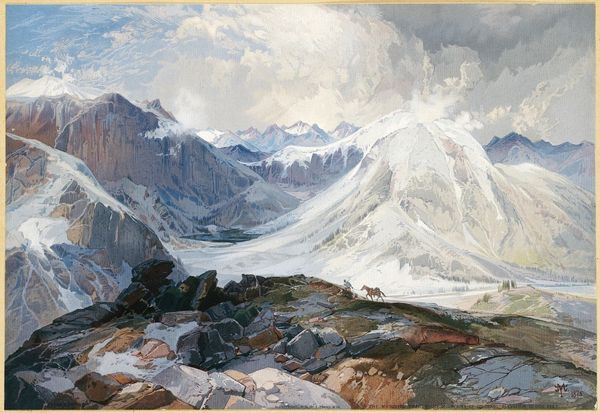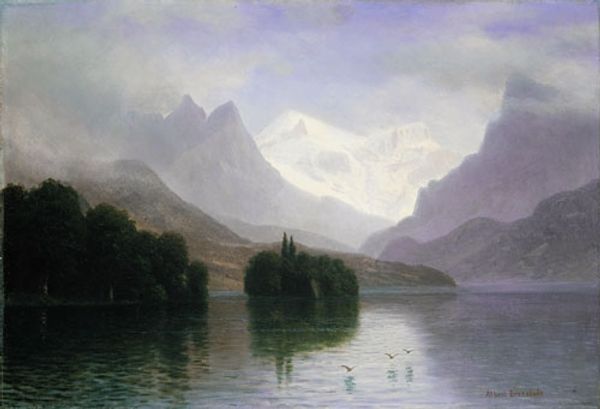
Copyright: Public Domain: Artvee
Edward Theodore Compton created this view of the Matterhorn in watercolor. The painting’s cool palette captures the sublime and formidable nature of the mountain. Notice how the structure of the painting mirrors the landscape itself: Compton uses a strong diagonal composition, leading the eye upwards from the detailed foreground of rocky terrain and hardy vegetation to the formidable peak that dominates the horizon. The atmospheric perspective, achieved through delicate washes of blue and grey, diminishes the details as the mountain recedes, enhancing its imposing scale. The use of light, filtering through the clouds, further accentuates the drama, casting shadows that emphasize the rugged texture of the mountain's face. The painting reflects the Romantic era’s fascination with the power and grandeur of nature. The Matterhorn, a symbol of the untamed wilderness, is rendered not merely as a geographical feature but as a monumental presence that commands respect and evokes a sense of awe.
Comments
No comments
Be the first to comment and join the conversation on the ultimate creative platform.

